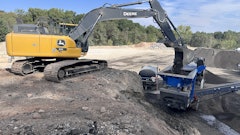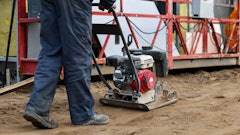
With the construction industry still well below where it should be, I’m sure a lot of you are currently experiencing a lack of work, material shortages and insufficient manpower to professionally complete a job that meets your standards. If you’re itching to get back to a meaningful workflow and “local” opportunities are not there to be found, you may have to consider expanding your territory, taking into account the risks attached to that type of endeavor.
Of course, any talk of performing work outside your normal area of influence depends on:
- what you do,
- the types of equipment you would consider moving to a jobsite and back,
- the ability to procure materials and manpower as needed,
- and the availability of capital to take on these jobs and at least break-even from a cash flow standpoint.
Ensure You Have the Funds
Let’s discuss the financing first. I would speculate that many of you took advantage of the PPP loan funds and have not yet completed the process to find out if your loan will be 100% forgiven. If the PPP funding means you still have an above-average cash balance at hand, then I would say you have some cushion to work with to support an expansion or your territorial limits in case things go south. In other words, it would be the PPP money you are investing and not your own.
Under these circumstances, I can see increasing your risk from what you would normally find acceptable to something higher. You don’t want to throw the money away. But if you have a reasonable job opportunity you can bid on with an expectation of at least breaking even, having those PPP funds lets you fund that risk without losing much sleep about it. And I suppose in some cases, taking on the job will help meet the PPP forgiveness requirements because you brought people back to work.
But keep in mind that PPP forgiveness is taxable. As you get closer to your year end, make sure you understand your tax position. If it were me, I would hold back at least 30% of my PPP payments (if they were still in my account) for tax purposes unless I was sure the PPP forgiveness has not created an unexpected tax liability.
Fill Equipment Needs
So, let us assume you pass the “available capital” test and you can afford to take the job. If that is correct, I would next look at equipment requirements from start to finish:
- Can you afford to have equipment on site for the entire work period?
- Do you have other jobs going that will need that equipment?
- Do you know what it will cost to transport and maintain the equipment on the worksite?
- Will you have the tech talent and parts to make repairs, as necessary?
Find a reliable rental company or two that can provide equipment to meet your timelines and can provide service to deal with required repairs in a timely fashion. This will free up most of your equipment issues and probably save you money in the process.
You should, of course, check out the potential vendors and match your rental transactions to the type of equipment you actually need, and not something “close,” to avoid signing a second rental contract.
Manage Logistics
Next, we get to logistic issues. This involves securing materials and ensuring they get to your jobsites when they should.
Hopefully, you can do business with the same vendors you use locally and know you can count on to meet your schedule. If not, maybe they can recommend a vendor at your destination they believe to be reliable.
Keep in mind you are not a regular customer to these vendors, which could put you to the bottom of the list from a service standpoint. Again, depending on the type of work you do, you may be more comfortable transporting what you need or having it delivered using your current vendors.
What about personnel? If you are not 100% assured that you will have the “horsepower” to meet budget, you should think twice about accepting the job.
That is also another logistics issue, but instead of materials, we’re talking workers. Do you transport them or use local talent if you can find it? In both cases, there are risks. Again, it depends on what you do. If highly skilled folks are required, it may be best to bear the transportation, room and board costs. It beats risking re-work liabilities, which could get expensive in these circumstances.
Get It Nailed Down
All things considered, there are two areas that need to be 100% nailed down before taking on work outside your normal territory:
- A bid supported by a budget and costs that account for the risk.
- A tight cash flow estimate that can be followed and updated as the job progresses.
If you come back from the job with the same bank account balance as when you left, give yourself and your team a pat on the back. Then put that PPP money to work on your next job.



















